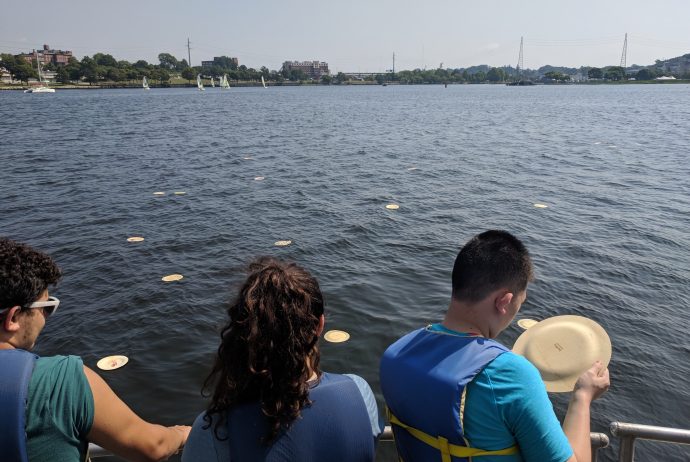The summer for many of our researchers is a time for writing, or field work, or a restful vacation before diving back into data analysis. But PhD students Abigail Bodner and Jenna Pearson at Brown University used this summer to inspire the next generation of oceanographers.
Bodner and Pearson co-taught an introductory oceanography class to 15 high school students (10th – 12th grade) from all over the world, entitled Studying the Ocean from Blackboard to Drones. This is part of Summer @ Brown, where students get a ‘pre-college’ experience. The session was two weeks long, and consisted of lectures, water tank experiments, a boat tour of Narragansett Bay as well as CTD casts, sediment grabs, a troll, a plankton tow, and drift card releases.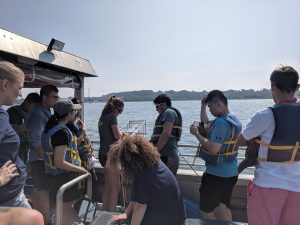

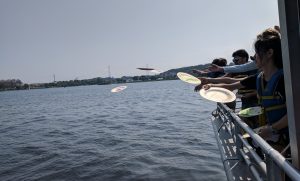
During the second week the students worked on a project related to what was discussed in class, and gave a poster presentation on the last day to an audience of classmates as well as 10-15 people from the Brown University’s Department of Earth, Environmental, and Planetary Sciences.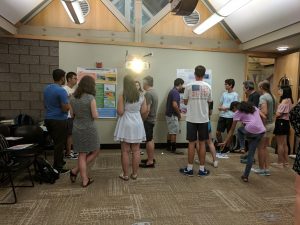
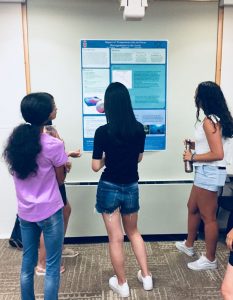
“The course turned out great, and the students really had an interest in studying the arctic as well as ocean acidification,” said Jenna Pearson proudly.
Course description
This course explores the basic principles of oceanography through theory, observations and applications. The first week is centered on theoretical physical oceanography and general characteristics of the ocean. This includes global ocean properties such as typical temperature and salinity profiles and distributions, the governing equations of motion, simplified balance equations, a description from small scale phenomena such as tides and waves to large scale phenomena such as oceanic gyres and meridional overturning. A field trip to Narragansett bay will take place tentatively on Friday of the first week where students will take a boat tour of the bay and make conductivity-temperature-depth (CTD) casts to observe temperature, salinity, and density profiles. Surface ocean motion will be observed by launching floating plates into the bay and observing their dispersion. The second week will entail more specialized lectures. The first two days introduce ocean-atmosphere interactions with implications for coral reefs and climate variability. The next two days focus on ocean biogeochemistry with emphasis on the carbon cycle and coastal dead zones.

